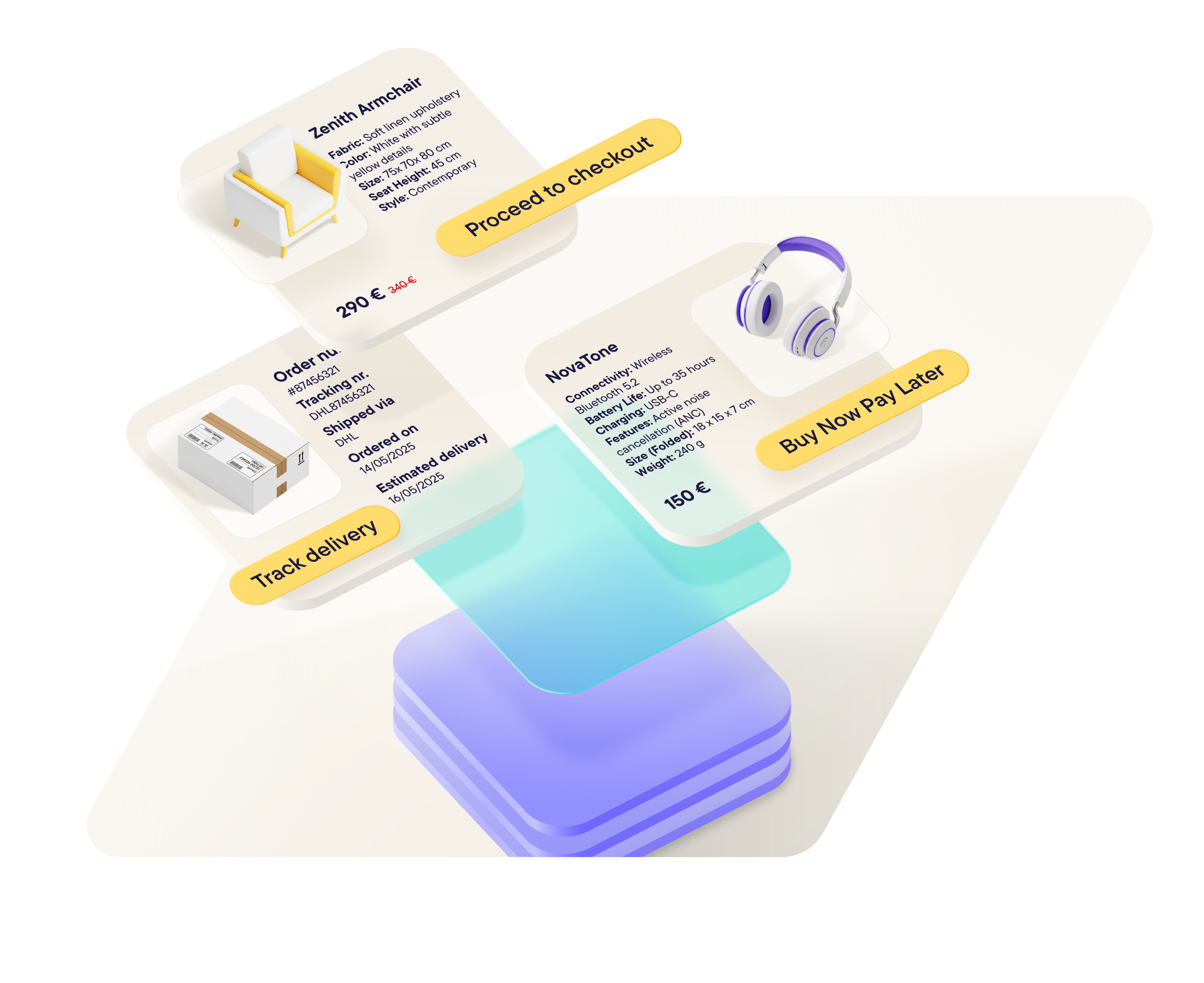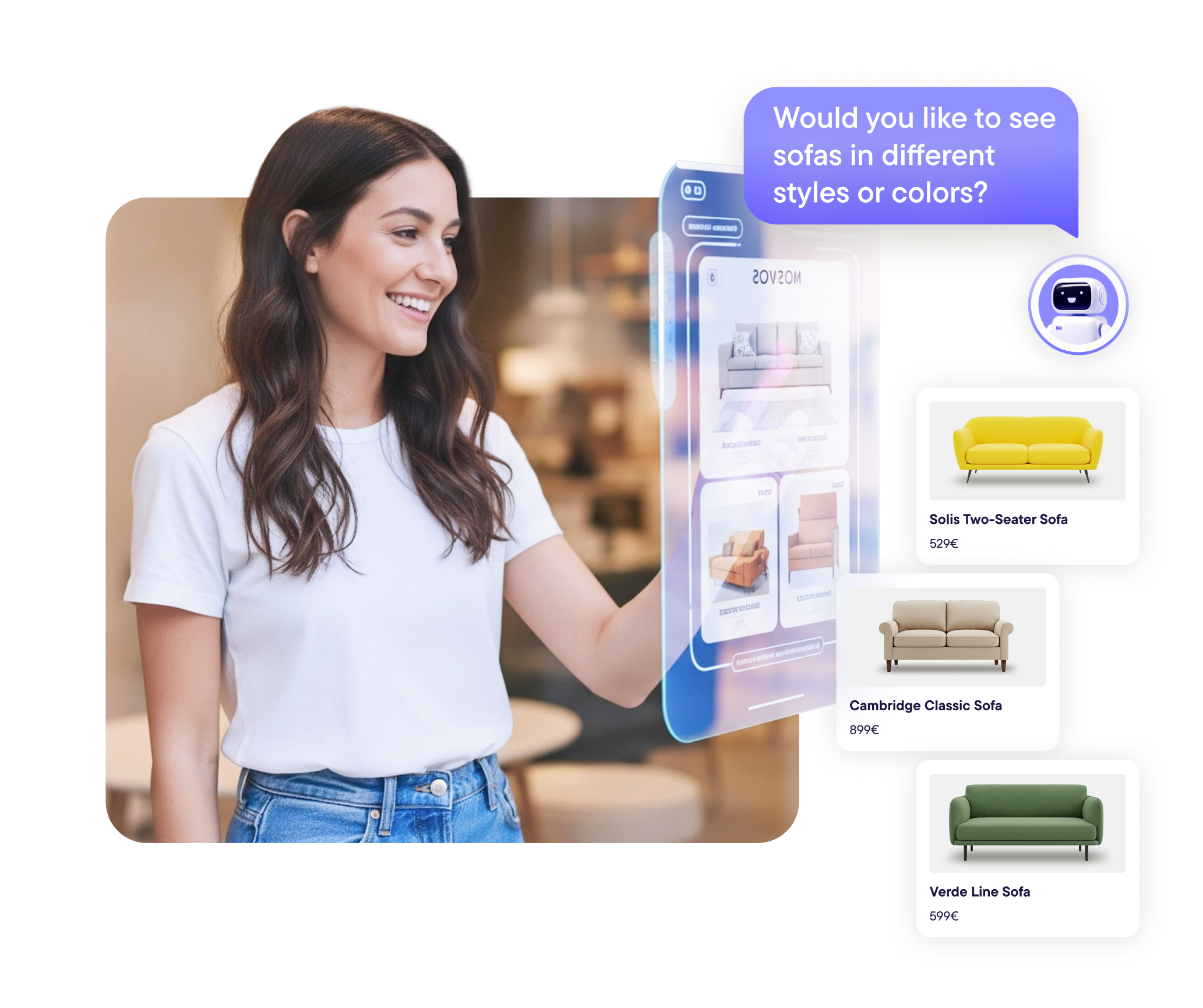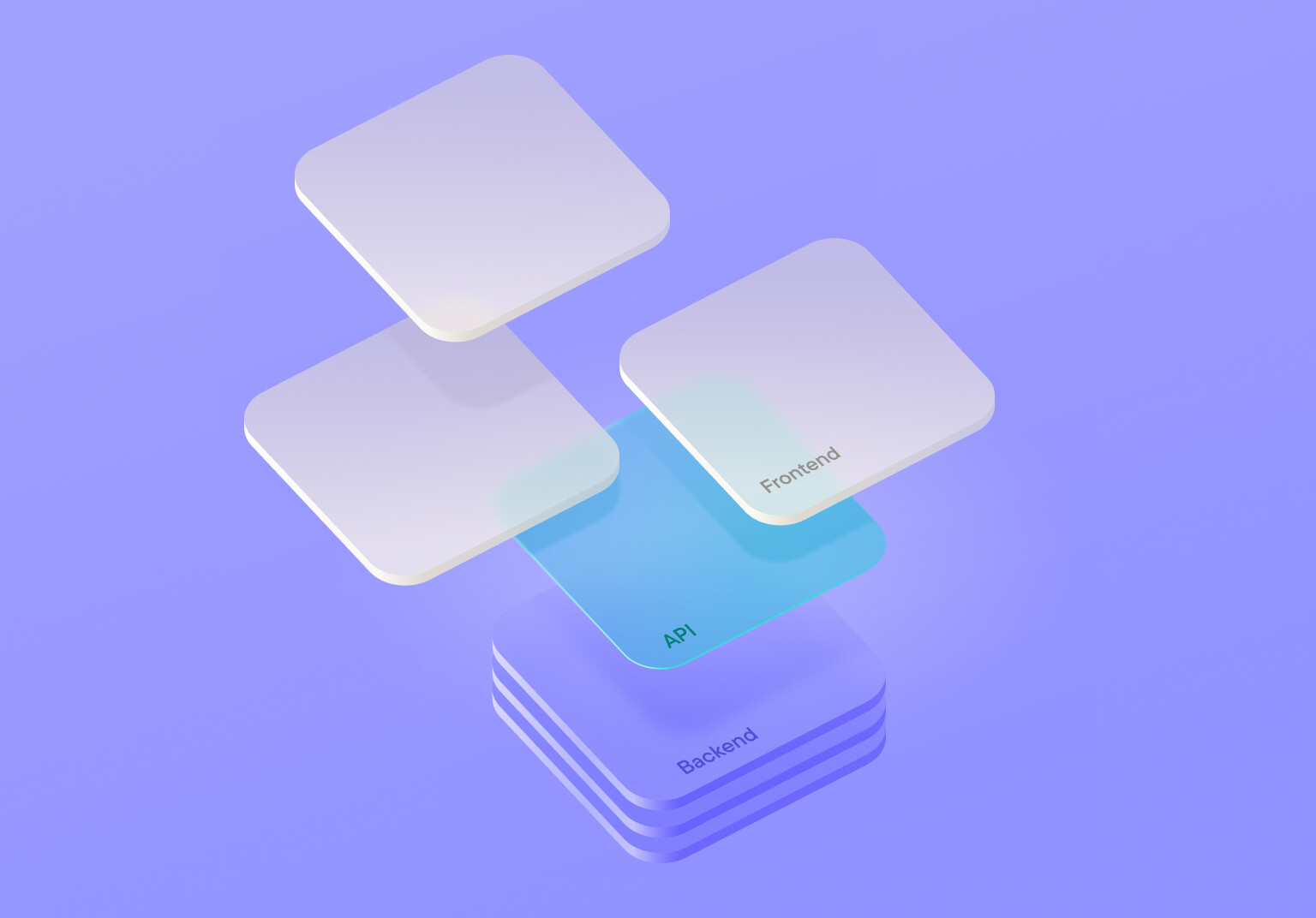Everything you need to know about headless commerce.
How can your business unlock the future of digital commerce with headless commerce? Explore what it is, how it compares to traditional systems and why leading brands are making the switch.
TALK TO AN EXPERT
What’s headless commerce?
Headless commerce is an architecture that decouples the frontend of an eCommerce experience (what users see) from the backend (where business logic lives).
In headless commerce solutions, the backend commerce engine connects to any frontend via APIs. This means developers can build websites, mobile apps, in-store kiosks, voice assistants or even AR/VR experiences — all powered by the same commerce logic.
Think of headless like how a restaurant operates: The kitchen (backend) and the dining area (frontend) operate independently, but communicate seamlessly to deliver the perfect meal.
The 3 top benefits of headless commerce
With decoupled front and backend systems, teams can move faster and innovate independently. This leads to better performance, faster load times and optimized experiences across all devices.
Easily deliver consistent, personalized experiences across web, mobile, apps, social media and emerging channels — meeting customers wherever they are.
Gain full control over UI/UX to build differentiated experiences. Seamlessly integrate AI, CDPs, CRMs and other tools through a flexible tech stack.
Legacy eCommerce vs. headless commerce
The main differences you should know.
Legacy eCommerce | Headless commerce |
Tightly integrated frontends and backend | Decoupled frontends and backend |
Monolithic architecture | Part of MACH® architecture |
Difficult to integrate | API-first design |
Limited customization | Full UI/UX control |
Hard to support new channels | Omnichannel-ready |
How do headless, composable and MACH compare?
- Headless commerce: Focuses on decoupling frontend and backend.
- Composable commerce: It takes the idea of headless further by decoupling the backend further into individual components, such as product catalog, checkout and promotions. Every composable infrastructure is headless, but not every headless infrastructure is composable.
- MACH®: Microservices-based, API-first, Cloud-native, Headless — a set of principles for modern architecture.
Is headless commerce right for your business?
You have the freedom to weave innovation and experimentation into your organizational DNA. Test new business cases. Turn new devices and channels into revenue streams. From digital signage to voice assistants to in-car interfaces and more, headless makes the impossible possible.
Require greater control over frontend design and performance.
Operate across multiple channels such as web, mobile and IoT.
Have access to in-house development teams or work with a partner agency.
Need to iterate quickly and drive continuous innovation.
Are experiencing rapid growth and finding monolithic systems limiting.

Agentic AI and headless commerce
Agentic commerce lets AI act in real time: Reorder, compare and personalize. Headless gives agentic AI the foundation and freedom it needs to work through:
APIs to connect across systems.
Decoupled frontends to adapt experiences instantly.
Unified data to make smart, contextual decisions.

Enterprises implementing modern commerce without headaches.
How to implement headless commerce with commercetools?
Whether you’re building from scratch or modernizing your stack, commercetools gives you the tools to launch faster and innovate continuously.
Frequently asked questions
What are the best practices for AI integration in headless commerce?
Integrating AI into a headless commerce environment can unlock powerful personalization and automation capabilities. To do it effectively, consider the following best practices:
- Use API-first AI services: Choose cloud-native AI tools and provide robust APIs so they can seamlessly plug into your headless stack.
- Focus on personalization: Integrate AI-driven product recommendations, dynamic pricing and content personalization to enhance the customer experience.
- Leverage AI for search and discovery: Implement AI-powered search engines to improve product discovery.
- Automate customer service: Integrate AI chatbots and virtual assistants into the frontend for responsive support without overloading human agents.
- Test and optimize continuously: Use A/B testing and predictive analytics to refine AI algorithms over time based on customer behavior and feedback.
- Ensure data privacy compliance: Make sure all AI tools comply with GDPR and other data privacy regulations.
How does headless commerce support omnichannel strategies?
With headless architecture, the same backend can serve multiple frontends, such as websites, mobile apps, in-store kiosks, voice assistants and more. This enables consistent experiences and centralized data across channels, essential for effective omnichannel retail. Businesses can deliver personalized content and promotions to users regardless of the touchpoint, which increases engagement and conversion rates.
How is commercetools different from other headless commerce solutions?
Here’s how commercetools compares to other major players:
commercetools Highlights:
- Headless-native: Designed specifically for headless commerce (not adapted from a legacy system).
- Microservices architecture: Enables modular development, faster scaling and flexibility.
- API-first: Everything is accessible via APIs, making it ideal for custom frontend experiences.
- Cloud-native: Built to scale efficiently in the cloud.
- Composable commerce support: Lets you integrate best-of-breed services for payments, search, CMS, etc.
Comparison with other solutions:
- Shopify is primarily designed as a monolithic SaaS platform. It provides some flexibility for headless implementations, but it’s best suited for small to mid-sized businesses looking for a fast, simplified setup.
- BigCommerce supports headless commerce through APIs and an open SaaS model. It offers less backend flexibility than commercetools.
- Adobe Commerce (Magento) offers headless functionality via APIs, but it was originally built as a monolithic platform. The vendor is known for its inflexibility and lack of scalability.
- Salesforce Commerce Cloud provides headless options through APIs and SDKs, with deep integration into its CRM ecosystem. While it’s well-suited for large enterprises, it’s less modular and flexible than modern composable platforms like commercetools.
- SAP Commerce Cloud has robust enterprise features, but its legacy architecture may limit agility. It’s best for large enterprises already invested in the SAP ecosystem.
- Oracle Commerce offers headless capabilities through integration tools, but it's a legacy platform that evolves more slowly than modern, cloud-native solutions.
In a nutshell, commercetools is best for enterprises that want maximum control, scalability and the ability to build fully customized digital experiences.






















